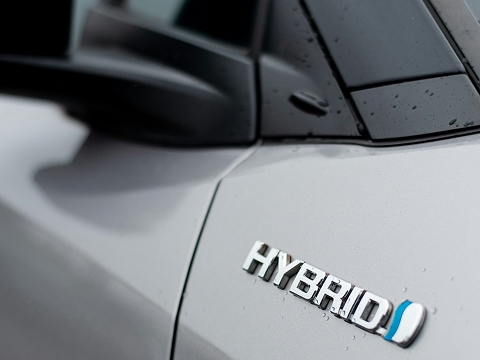Mazda Hybrids vs. Plug-In Hybrids
Cars are going electric, and Mazda has jumped into the mix with some smart options. Deciding whether to go for a hybrid or a plug-in hybrid can be confusing, but our team at Bountiful Mazda is here to help. In this guide, we break down Mazda hybrids versus plug-in hybrids in plain English, helping you determine which one best fits your daily driving needs, lifestyle, and budget.
What Is a Traditional Hybrid?
A traditional hybrid vehicle seamlessly juggles gas and electric power. Electric motors handle low speeds (up to 30 mph), while the gas engine takes responsibility on the highway. Sometimes they work together for extra power. Either way, the car's computer makes decisions, allowing you to focus solely on driving.
A Hybrid's combination of a gas engine with electric batteries means that you can save money on fuel while still doing your bit for the environment. You'll still have to take trips to the gas station and fill up normally, but you'll find yourself doing it a lot less often.
What Is a Plug-In Hybrid?
Plug-in hybrids work like regular hybrids, but they add the capability to plug in and have larger batteries, allowing for significantly more electric driving. Batteries range from 10-20 kWh, and you can get a full charge in about eight to 12 hours with a Level 1 (120V) charger and as little as 1.5 to three hours with a Level 2 (240V) charger.
Plug-in hybrids offer the benefits of both electric and gasoline power. You can charge from outlets or stations, drive electric, but keep a gas backup for long trips. Cars switch between electric and hybrid modes automatically. When the battery drops to a low state of charge, the vehicle switches to a charge-sustaining mode and operates like a standard hybrid.
CX-50 Hybrid
Mazda's hybrid tech keeps cars fun to drive. In the 2025 CX-50 Hybrid, a 2.5-liter four-cylinder pairs with three electric motors — one for low-speed propulsion, one for cutting idling and powering accessories, and one for electric all-wheel drive (AWD) rear power. It produces 176 horsepower with the gas engine alone or 219 horsepower when combined with the electric motor.
EPA figures come in at 39 mpg in the city, 37 mpg on the highway, and 38 mpg combined, all delivered through an electronic continuously variable transmission with none of the weird hybrid disconnect, just responsive Mazda driving. The lineup consists of Hybrid Preferred ($33,970), Hybrid Premium ($37,400), and Hybrid Premium Plus ($40,050); each trim uses the same powertrain and ratings.
CX-70 and CX-90 Plug-In Hybrids
The CX-90 Plug-In Hybrid Electric Vehicle pairs a 2.5-liter four-cylinder with an electric motor for 323 horsepower and 369 lb-ft of torque. It comes with a 17.8 kWh battery good for 26 miles of electric-only driving, a 56 MPGe combined rating, standard AWD, and seating for up to eight. Pricing starts at $49,945. The mechanically identical five-seater CX-70 Plug-In Hybrid Electric Vehicle starts at $54,400.
Making the Decision: Which Is Right for You?
Regular hybrids are simple, low-maintenance gas savers without the need for regular charging at home or out on the roads. They're a perfect choice if you want to go for a greener lifestyle without significantly changing your habits. The CX-50 Hybrid delivers better mileage with zero learning curve.
A plug-in hybrid might be the right choice if you're an eco-conscious driver who wants an electric experience without committing to a fully electric vehicle. Daily driving within electric range plus regular charging makes plug-in hybrids worthwhile.
Plug-in hybrids cost more upfront than hybrids. You can expect to pay anywhere from $500-$4,000 for home charging equipment and $1,000-$6,000 for eventual battery replacement. The plug-in hybrid payoff depends on price differences between vehicles, electric-only miles you regularly drive, local electricity and gas prices, and your driving patterns.
Daily distance matters. If you drive under 25 miles daily with home charging, plug-in hybrids handle most trips electrically. If you frequently take long trips or travel over 50 daily miles, regular hybrids give consistent benefits without charging hassles. Apartment living or no dedicated parking favors traditional hybrids. Home garages make Level 2 charging easier. Plug-in hybrids are only as efficient as your charging habits allow. If you never plug in, you're just hauling dead battery weight.
Pick a solution that matches your driving, charging access, budget, and environmental goals. Making the wrong choice could mean wasting money on unused technology or missing out on electric savings.
Experience the Mazda Range at Bountiful Mazda
You can experience both technologies at Bountiful Mazda in Bountiful, Utah. Our team will help match you with the right car based on your actual driving needs. We'll assess your situation and find the perfect Mazda for your adventures in Utah. Visit us today or contact us to find out more.
Image by Ivan Kazlouskij | Licensed with Unsplash License
